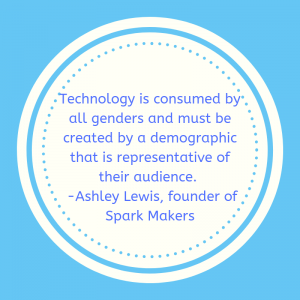If you read Part 1, you’ll know by now that my experience as a student sucked. By the time I went to teacher’s college, I had fully embraced my queerness. I had a reasonably good handle on my identity. As I took my first baby steps into the world of teaching, I had decided that I was going to do better for my students than any of my teachers did for me.
Oh, to have that same youthful optimism and fire.
After ten years, so much of it has been chipped away by constant reminders that the school system and almost everyone in it are still perpetuating the idea that there is a “default” and then there are aberrant identities that are outside of that norm.
Think about your experience as an educator and whether any of these moments have happened at your school:
- Being asked to “balance” the distribution of boys and girls when creating class lists.
- Playing “boys vs. girls” in Phys Ed.
- Having a “boys team” and a “girls team” for intramurals.
- Creating groups of desks to intentionally mix genders.
- Having “boys” and “girls” washroom passes.
- Splitting the class based on gender for health class.
- Saying “boys and girls” to address your class.
Do those feel innocent to you? No big deal? Look, it’s okay if you have done these things and never thought twice about them. Most of us have. But we have to acknowledge that those types of small actions contribute to the sense that we have a specific set of expectations around what it means to be a “boy” or a “girl.” That we expect all students to even fit into that binary. We have to be better than this.
Students notice these things. Some of them are obvious, like the Phys Ed example, while others you may think are more “behind the scenes” like class lists, but students notice. And when students notice those things, they draw conclusions about what the Institution of Education thinks about who is attending their schools.
And then, there’s how educators approach students who don’t fit those expectations.
I can’t tell you how much it hurts every single time I hear these things:
They’re too young to know they’re trans.
They just want attention.
I think they’re lying.
The other kids won’t get it and will all want to use the all-gender washroom.
I have to inform their parents.
Fine, but I’m not going to change how I teach.
I can’t talk about this in class because parents will get upset.
I don’t know enough about this to teach any of it.
I don’t have time to do anything that isn’t in the curriculum.
Why do we need a neutral washroom if we don’t have any trans or NB students?
You think you’re commiserating with a colleague. You think you’re just expressing your frustration and stress with a colleague. What you’re doing, when you’re saying these things to a queer colleague, is often retraumatizing them. You’re reminding them of their otherness. You’re showing them that you consider their existence extracurricular and optional.
You’re showing not only your students but your colleagues, too, that you do not think their existence is worth the time to learn about, integrate into your teaching, and normalize.
But wait! There’s more!
Remember back in Part 1, when I talked about fear? And how it kept coming up at the PD day a few weeks back when we were discussing how to use a 2SLGBTQ+ resource in the classroom?
I want to talk about that fear.
When you say you’re scared of parent backlash, what exactly is it about that idea that scares you? What do you think will happen?
Will a parent post about you on social media?
Will a parent complain about you to the board?
Will a parent remove their child from your class?
Or are you scared that a parent will make an assumption that you are queer?
Are you scared that a parent will decide that you are unfit to teach their child?
Most importantly, why is it that you think that your fear is more important than your responsibility to your students to support them, validate them, see them, and show them a world where they are not something other and are, instead, just… normal?
Do you realize that your 2SLGBTQ+ colleagues and students have lived with fear their entire life? That we hesitate before putting our family photos up in our classrooms, the way that some of you do without thinking twice, because we are worried about the reaction?
And we notice, Reader, when you turn equity lessons into events instead of building it into your everyday teaching. We notice when you inform (let’s call it what it is: warn) families before discussing equity in the classroom. We notice when you give families the chance to opt their child out of lessons on equity.
As a queer parent, when I get a letter home “informing me” about an upcoming lesson where the class will be talking about a “challenging topic,” it signals to me that the educator and the school behind this letter consider this topic to be controversial. That there will be different points of view and that those have to be “respected.”
But my life is not a point of view. I have an absolute, inalienable, unassailable RIGHT to exist. 2SLGBTQ+ people are not a matter of debate, we are not an opinion – our existence is objectively right and we have an obligation, as educators, to promote and defend that existence just as fervently as we do all others.
When you leave space for debate, when you “respect all points of view” in your classroom, you’re telling your queer students and colleagues that you think it’s okay that some people believe that their existence is wrong.
And we notice that.
We notice when you refer to teaching about 2SLGBTQ+ as a challenging topic. Why is it challenging?
Does it make you uncomfortable? Examine that, because that’s some problematic nonsense right there.
Do you feel like you don’t know enough? Then educate yourself, just like you probably look up half of the Science curriculum every time you change grades. Or maybe that’s just me.
Are you scared of having to defend your teaching? Your board and union have both taken public stances in defense of 2SLGBTQ+ rights and they’re protected in the Canadian Charter of Rights and Freedoms, so settle down.
Do you think you’re going to face a lot of questions from students that you may not know how to answer? Isn’t that… pretty much a daily experience in teaching, no matter what subject? Embrace learning WITH your students.
I’m glad that it’s becoming more commonplace to talk about 2SLGBTQ+ experiences, identities, and perspectives in class, but if you feel like you need to or even can warn your students’ families before discussing equity in the classroom, quite frankly, you aren’t talking about equity often enough.
Finally, I want you to know all the good things I notice, too.
I notice when you introduce yourself with your pronouns.
I notice when you don’t say “moms and dads” to your students.
I notice when you teach with books showing queer experiences – both as the lesson itself and without making the character’s queerness be THE POINT, because hey, we’re also just regular people doing regular things and it doesn’t all have to be about being queer.
I notice when you tell your students about the gender neutral washroom on their First Day of School tour.
I notice when you don’t say “boys and girls” to get your students’ attention.
I notice when you embrace inclusive intramural teams.
I notice when I can’t find any of the 2SLGBTQ+ picture books because they’re all out in colleagues’ classrooms being used.
I notice when I walk by your students and overhear them talking about what they’re learning in class.
I notice when students feel safe to explore their identity in your classroom.
I notice when students feel safe to come out in your classroom.
I notice when you don’t whisper “gay” like it’s a bad word.
I notice when you don’t wait for me to be the one to say, “This long standing practice is problematic and rooted in homophobia. Can we change it?”
There’s a long road ahead of us. When educators are more scared of community backlash than they are of harming their students, we have to call that out.
Your inaction is causing harm.
Your fear is causing harm.
Your students deserve better than that.




